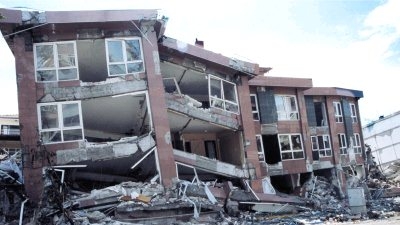Cities are at the epicenter of today’s geographical risk profile and Istanbul is no exception. With rapid global urbanization, cities not only host a majority of the world’s population but also represent a concentration of economic assets and social and entrepreneurial capital. Because Istanbul resides along the major North Anatolia seismic faultline, the likelihood of another large earthquake hitting the city in the coming decades is extremely high. Exposure to natural disasters - as well as global economic downturns and fiscal constraints - makes risk management a critical topic of focus for cities and has prompted policy makers in Istanbul to ensure that their city is well positioned to mitigate any risk posed by an earthquake or other disaster.
“It’s not Istanbul’s fault that it sits on a geological faultline,” says Martin Raiser, World Bank Country Director in Turkey, “what matters is what the city is prepared to do about it.”
Judging by the significant investments that have been made in Istanbul for more than a decade, the city is prepared to do a quite a lot. The more than $1 billion that has been utilized over the last 14 year has helped improve the city’s institutional and technical capacity for preparing for earthquakes - with an emphasis on emergency response, strengthening critical public facilities for earthquake resistance, and better enforcement of building codes.
The results of these efforts have been palpable. So far, more than 725 public buildings have been retrofitted and 21 additional buildings reconstructed in order to help them better withstand the shocks of an earthquake. A training program around the retrofitting code was also provided to more than 3,600 engineers throughout Turkey, further bolstering these efforts to improve the country’s infrastructure. Additionally, both the Public Awareness and Neighborhood Community Volunteers programs offered training in disaster preparedness to 450,000 people, and an estimated 5 million citizens were also reached via social and public media.
As a result of these successes, Istanbul is well positioned to share its knowledge and experience with improving disaster risk management on a large scale - as it did during the recent Sustainable Cities Knowledge Exchange. During this event, held in Washington D.C. and New York City on September 24-25 2013, policy makers - including representatives from the Office of the Chief Financial Officer (OCFO) in the District of Columbia and New York City’s Commissioner of Finance and Deputy Mayor’s Office for Economic Development - met with a delegation from Istanbul to exchange ideas and experiences of coping with disaster and implementing appropriate reforms.
With Istanbul enduring, on average, one major earthquake every century for more than a millennia, this comprehensive approach to disaster risk management taken by officials in the city is both laudable and imperative. By coupling improvements in infrastructure with awareness education, training programs, and knowledge exchanges, Istanbul is taking many of the precautions necessary to ensure that if the expected earthquake does hit this century, many fewer lives will be lost.

